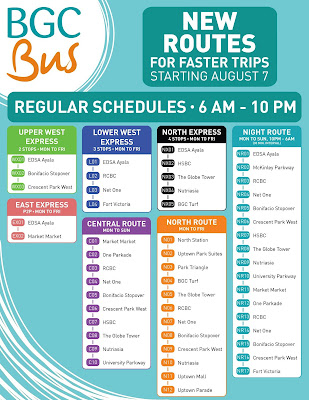The rainy season is just around the corner and even as early as May we are already getting scattered rainshowers and thunderstorms. For sure, typhoons and strong rains are soon to follow, and based on previous trends, flooding is something we will need to deal with again.
Here are some tips that can help commuters deal with most flooding situations in Metro Manila.
Before Going Out
First off, be aware of the weather forecast for the day. If there's a typhoon coming or heavy rain is expected then perhaps you should consider postponing your trip to another day or choosing a different route to your destination.
Assuming you still need to go out, familiarize yourself with the
flood-prone areas in Metro Manila and plan your route accordingly.
And finally, don't forget your raincoat and/or umbrella!
During a Flood
If the way you're going to pass through is flooded, it may be a good idea to wait until it subsides before heading out. If the flood is not too deep, a bus or even a jeep might be able to pass through.
Sometimes though, you may not have a choice except to walk through flooded areas. Here are some things to keep in mind:
1. Try to minimize the time spent wading in flood. You can do this by altering your route, using elevated walkways, taking the MRT/LRT (assuming there's still electricity) and so on.
2. Wading through flood can be risky especially if you're not aware of any open manholes or road excavations in the area. If there is a line of people wading through the flood, follow that line so that you're sure there are no hidden dangers along the path. Avoid crossing overflowing
esteros or rivers because one misstep can send you to a deep area and drown you, especially if there is a strong current.
3. Be aware that you can get electrocuted if there's still electricity in the area.
4. If there's a current, take note that even ankle-deep water can be enough to unbalance you, and any deeper will be enough to sweep you away. You can use the center islands of major roads since these are usually more elevated and have fences that you can grab onto. Some people in the area might even provide rope that you can hold onto while crossing a street to prevent you from being swept away. The point is to make sure you have something to grab onto while in the water.
5. Going into flood waters that are more than waist deep is dangerous not only because the chances of getting swept away are higher but also because sudden changes in elevation can suddenly submerge you.
6. Keep an empty Ziploc bag handy because you can put electronics (such as cellphones and MP3 players) in them to prevent them from getting wet in a flood. Ideally, you should carry your bag on your shoulders or over your head when wading through a flood, but you never know if you might accidentally drop your bag or lose your balance.
Most importantly, use common sense. If the floodwaters are too deep or you are not really sure how deep the waters are or if you can see that the current is so strong that even vehicles are getting swept by floodwater, DO NOT CONTINUE. Try to find an elevated and safe place to wait out the flood (a pedestrian overpass can serve as temporary shelter).
After a Flood
You've finally come home after wading through floodwaters. What next?
1. It's a given that you should dry your wet clothes and disinfect them. If you passed through mud, you may have your work cut out for you especially cleaning your shoes.
2. Take a shower, not only to prevent
pasma and
lamig but also to disinfect yourself.
3. If you incurred scratches or minor wounds along the way, apply anti-bacterial cream. If you haven't had a tetanus shot yet, get one.
Leptospirosis is also a real danger so be aware of the signs and symptoms.
Click on this link to learn more about leptospirosis, its signs and symptoms and treatment strategies.
4. It doesn't hurt to have a hot meal and warm drinks afterward because going through rain and flood can leave you chilled and vulnerable to illness. A preventive cup of
salabat or two before going to bed may stave off that cough and cold.
Hopefully all of these tips will help you in case you have to cross through flooded areas.
Stay safe!





